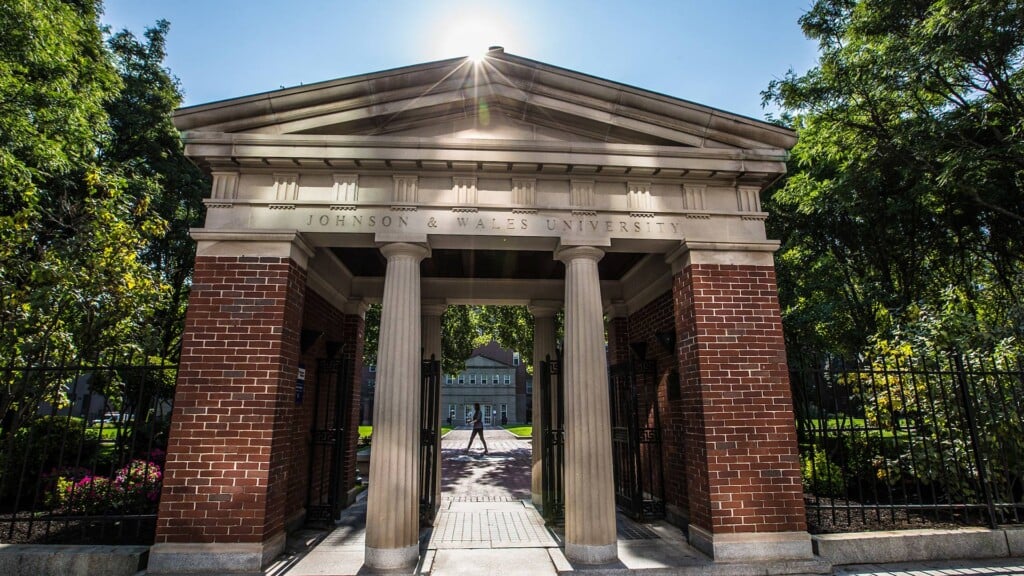This Renovated Farmhouse Celebrates a Little Legacy
Where early American history roots embrace modern comforts.

The Painted Chamber features scenes from the War of 1812 and the Angel Gabriel that a former Little Compton schoolmaster painted. Photography by Meghan Sepe
A long the pastoral lanes of Little Compton, where grassy pastures sprawl across the landscape, stands a home with a legacy so deep that ghost stories emanate from its walls. They’re the memories of generations of the Briggs, Coombs and Bogle families, who have inhabited the seventeenth-century farmhouse for more than 340 years, mixed with tales of enslaved people who fled bondage in the decades before the Civil War.
Homeowners Ron and Jane Bogle aren’t daunted by its history; in fact, they’re fresh off a renovation to painstakingly maintain that integrity while also accommodating a modern lifestyle. Ron Bogle inherited the 5.25-acre property, which dates to 1683, from his mother as part of the 120-acre Briggs estate. He proudly points out the homestead’s original beams, historic paintings and embroidery uncovered during restoration, and the spot where his grandmother prepared family meals.

The new kitchen opens to a sitting area and dining room, which is the central gathering space for the whole family. Photography by Meghan Sepe
The house was also a stop on the Underground Railroad, where enslaved people could find sanctuary after landing on the Rhode Island coast.
“Near the chimney here, they climbed up into the attic to hide,” he says, opening a trap door that hides the corbelled brick chimney. “You can see different etchings on the wall as if someone was counting the days they may have been in that room.”
Embracing the integrity of this central space, as well as original structural beams throughout, was paramount during the makeover, as was reconfiguring the flow between rooms, replacing a sunroom with an enlarged kitchen, and rebuilding the second-floor stairwell.

Original wood beams and wide-plank floors in the living room and throughout the home honor its craftsmanship. Photography by Meghan Sepe
They rebuilt interior walls, and added HVAC systems, insulation and new windows to winterize the structure for year-round living. A steel beam and posts were added to stabilize and straighten the building, says principal architect Greg Yalanis of Spring Street Studio in Newport. K&R Construction of Middletown was the builder on the project.
At the ground level, experts rebuilt the foundation using the same stone that the house was originally built on, with additional cement reinforcement, Bogle says, and they raised and reinforced the northwest corner eight inches to accommodate sinkage. They sanded original wide-plank floors that had been painted over, and restored them to their original beauty.
History steered the design and construction process from the beginning, Yalanis says.
“The farmhouse project was all about sustaining the legacy of the Briggs family,” Bogle explains. “So when we renovated, we tried to retain the old while modernizing part of it.”

enslaved people fleeing bondage on the Underground Railroad climbed up this interior chimney to hide in the attic. Photography by Meghan Sepe
Upstairs, more evidence of the building’s essential legacy was obscured behind previous renovations. A second-floor bedroom revealed historic paintings on the walls, doors and beams, which halted their restoration to protect that artwork.
“We call it the Painted Chamber. One of the first schoolmasters of Little Compton boarded here and stayed in this room. On the panels of the doors he painted different scenes, using whatever primitive paint they used in those days. He captured a scene from the War of 1812 off Fort McHenry in Baltimore,” Bogle says. “This whole room could be removed and put in a museum.”
It’s in this room that Jane Bogle, an interior decorator and collector, lights up. She points out the antique dresser from her own family, and the embroidery salvaged from the closet during construction. She affectionately holds a piece of cherished embroidered artwork that shows a Black couple dancing with their hands up, and the words “We’s Free” sewn underneath. Saving and displaying heirlooms like these is her way of honoring the home’s past and those who tread here before.
The Bogles acknowledge that the homestead stands as a testament to solid historic building practices, and they’re eager shepherds of the entire property. This includes another home where their children and grandchildren stay — a saltbox where a caretaker and his family once resided — and a barn workshop, as well as a vegetable garden that Bogle’s father, an avid farmer, once tended.

The second-floor landing is a marriage of old and new: Original beams mix with new floors and walls, while family heirlooms like this armoire and rocking chair complement Jane Bogle’s antique store discoveries. Photography by Meghan Sepe
With weathered cedar shingles and overflowing gardens of hydrangeas and rhubarb, this property’s family tree now has another limb. And with any luck, all of the family ghosts can live in harmony with this next generation.
“We all agreed as a family, with our two grown kids, that the best option to sustain the Briggs legacy was to take care of the house to make sure it could last another 100 years-plus. So that’s what we did,” Bogle says. “We did not want to be the ones to bust the legacy.”































